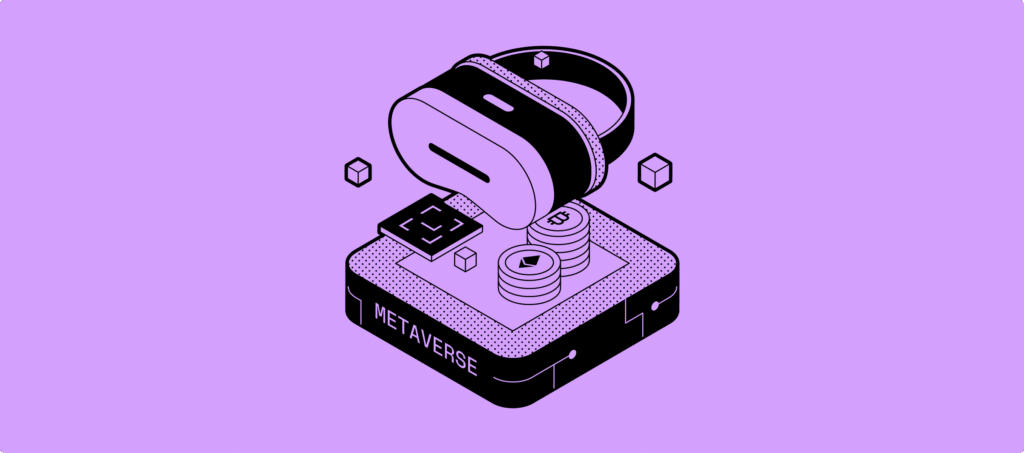In an increasingly digitized world, it is becoming clearer that digital assets in the metaverse need to be safeguarded as well as physical assets. As a hardware wallet known primarily for securing crypto, Ledger is now shifting its focus to protecting digital assets such as NFTs and the metaverse as a whole.
To learn more about Ledger’s role in the metaverse, NFTevening sat down with Ledger’s VP of Metaverse & Web3, Sébastien Badault, at the Ledger Villa during NFC Lisbon.
Quotes have been condensed and edited for clarity.

Sébastien Badault: The VP of Metaverse & Web3 at Ledger
In addition to being a metaverse enthusiast, Sébastien is an experienced professional with years of experience at the intersection of technology, security and virtual worlds. Before joining Ledger, Sébastien worked with esteemed companies such as Alibaba, Google France and Amazon France. At Alibaba, he was instrumental in building the company’s Luxury Pavilion – China’s largest online luxury platform. However, his interest in virtual worlds started well before that.
“My first job out of college was a startup in 1995,” says Sébastien. “I was at e-commerce at Amazon, but this was like, 98, this is really before Amazon took off. And then, you know, went to Google, and then Alibaba and Ledger.”
His interest in virtual worlds was intensified by his discovery of crypto and blockchain. “I bought some crypto like way back when. I can’t remember when I bought a little bit, but I was familiar with the space. But I got more interested in it,” he continues.
Brands’ adoption of new technologies
Sébastien compares the 2021 crypto and NFT boom to when he started working with luxury brands on web2 marketing strategies. “Having YouTube in 160 countries from one day to the next; you could do a homepage takeover and have your brand splashed over every single screen,” he recalls. “Those discussions took a while because I think at the time they were still pretty wary about anything internet-related.”
He notes how this mentality has shifted. Now, fifteen years later, he talks to the same brands about crypto and the metaverse, and they are keen to jump on the bandwagon. “I find it very interesting, maybe because they feel they were slow in adopting some of the things in web2,” says Sébastien. “So they want to make sure they don’t miss out this time. And also, they’ve learned a lot. I’m speaking to people that are really impressing me in terms of their knowledge or the standards.”
Sébastien notes that luxury brands are still very concerned with counterfeiting; as well as finding new ways to connect with customers. They, therefore, see web3 as a solution to a problem that has long affected the luxury goods sector. “This [referring to NFTs] is a great way to be able to show provenance and ownership. So I think it speaks to them as well,” he notes.
By linking their products to NFTs, luxury goods companies are finding new ways to tackle an age-old problem with an innovative, forward-thinking solution. However, it all boils down to finding the right partners to implement a web3 strategy that protects your assets.
Why safeguarding digital assets is crucial
As Sébastien puts it, “if you lose 1000 euros that you have in your pocket, I’m gonna be super angry and frustrated. But if somebody comes into your home and steals a painting that used to belong to your grandmother, that’s also worth 1,000, but you have an emotional attachment, you’re also going to be emotionally hurt.”
This analogy fits well when it comes to getting your NFTs or other digital assets stolen. “If you lose an NFT that has an emotional bond or a connection to a community, your boarding, you no longer have access to the border community. This is emotional attachment.”
Hardware wallets such as Ledger are creating a fool-proof environment that safeguards these assets. This is only possible because the Ledger team recognises that people have emotional or community attachments to their digital assets. It is therefore important to raise awareness that these assets should be protected to the maximum.
“All these different things will bring a whole bunch of new people into the space… people who love art, people love gaming, etc.,” says Sébastien. Since NFTs are entry points to Web3 for these people, it is now more important than ever to teach them about the importance of security and asset protection.

Ledger and the metaverse
As Ledger’s VP of Metaverse & Web3, Sébastien knows a thing or two about the metaverse. “The interoperability piece, I think is really key. We’re gonna own more and more digital assets and property like digital clothes, digital art, and then even digital identity.”
Sébastien also mentions how he thinks the metaverse is going to be closer to augmented reality, rather than a completely virtual reality… at least in the short term. However, this does not mean that we should do away with hardware wallets.
“I also don’t subscribe to the idea that the metaverse is going to be us with 3D goggles, and just like in virtual worlds on them. I think that we could be in the metaverse right now; because I could show you something through a virtual screen that I would touch with my hands,” imparts Sébastien. “If we have augmented reality, I should be able to put on some kind of skin or whatever that I own that I would take out of my Ledger.”
Undoubtedly, with great power comes great responsibility. The world is becoming more digitized and decentralized. As a result, each and every one of us will have the power to control our digital money and assets. This means that security is becoming even more important. As a decentralized hardware wallet, Ledger is therefore positioning itself as a physical solution for whichever way the metaverse evolves in in the years ahead.

